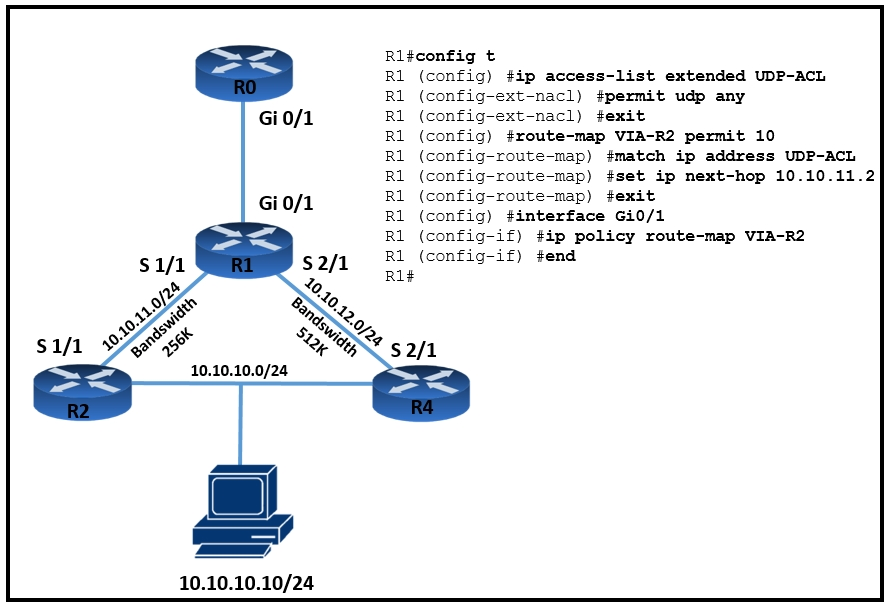
Refer to the exhibit. TCP traffic should be reaching host 10.10.10.10/24 via R2. Which action resolves the issue?

Refer to the exhibit. TCP traffic should be reaching host 10.10.10.10/24 via R2. Which action resolves the issue?
The configuration ensures that UDP traffic is routed through R2 using an access list and route map. However, for TCP traffic to follow the same route, it must be explicitly permitted in the access list. Allowing TCP in the access list without modifying the route map will ensure that both UDP and TCP traffic are handled similarly, directing all traffic through R2 to reach the destination.
A is correct
A is correct, the ACL is for UDP only BUT is already forced through R2 to reach 10.10.10.10. The BW is higher via R4 so that's the path TCP will take, so adding the TCP to the ACL forces it also via R2.
Adding just a Permit 20 on its own will not send traffic via R2. You could add a Permit 20 but it would also need a new ACL and the next hop setting. So for this I am chosing A is it seems more to the point.
We don't know if the router are using an IGP to account for bandwidth differences..A is the best answer
Why B is not feasible?
I actually agree, the question can be more to the point, i thought B initially also. A and B will solve the issue. Maybe a small reason why B could less correct: the actual placement of the permit statement is not relevant. Only TCP should be added as a permit statement, so A can be seen as more accurate here perhaps. Also A states not changing the route-map, that is correct also. So i can live with A as the correct answer.
A is Correct
A is Correct